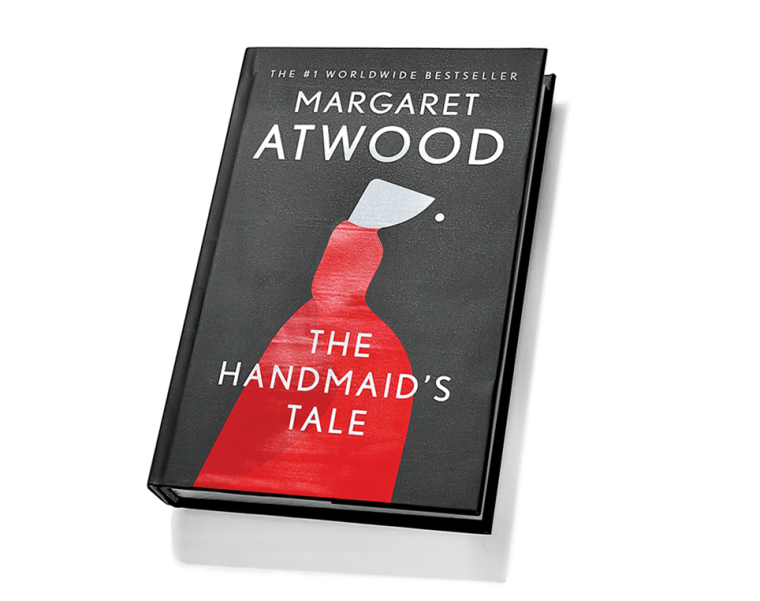The volume of Margaret Atwood’s The Handmaid’s Tale pictured below may look like any other copy of the classic novel. The stark red-and-white image of the eponymous handmaid—now emblematic of the fight for women’s reproductive rights—is the same design that has adorned other covers of Atwood’s best-seller. But if you held it you would feel the difference between those volumes and this one, the so-called “Unburnable Book.” This special edition, released in May, is made of fireproof materials: a hard cover of phenolic resin and a dust jacket and pages made of white cinefoil, a treated aluminum product, hand-sewn with nickel wire.

The special edition is made of fireproof materials: a hard cover of phenolic resin and a dust jacket and pages made of white cinefoil, a treated aluminum product, hand-sewn with nickel wire. (Credit: Doug Laxdal)
Doug Laxdal, whose Canadian graphic arts and specialty-bookbinding studio crafted the volume, describes the distinctive tactile quality of this one-of-a-kind tome: “It’s cold because it’s metal, and it also is about twice as heavy as what the regular book would be.” While the 384-page novel can be read for its story, it was not made for entertainment. It was manufactured this spring at the behest of Atwood’s publisher, Penguin Random House, and the Canadian creative agency Rethink to raise awareness about recent efforts to ban books from schools and libraries and funds for the literary nonprofit PEN America, which advances free expression. In a promotional video, which points out that would-be banners have even burned books recently, Atwood herself can be seen with a defiant look on her face as she aims a torch’s flames at The Handmaid’s Tale, a frequent target of book bans. White text floats over the image of unsinged open pages: “Because powerful words can never be extinguished.” Atwood’s words were powerful enough, at least, to help raise $130,000 at Sotheby’s June auction of the “Unburnable Book,” a sum, one hopes, that will go a long way toward fueling PEN America’s free-speech advocacy.








